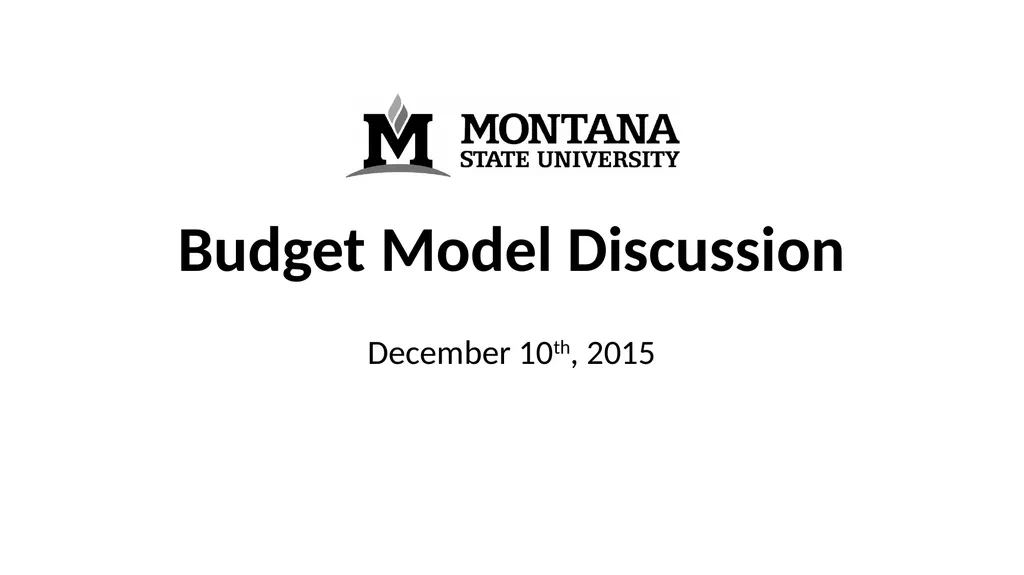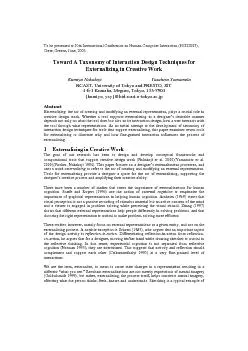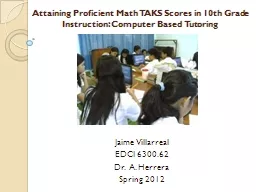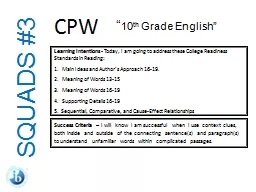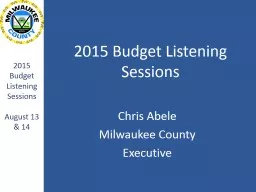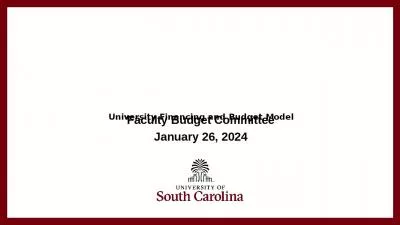Budget Model Discussion December 10th, 2015
Author : alida-meadow | Published Date : 2025-06-27
Description: Budget Model Discussion December 10th 2015 Introduction Overview Current Budget Model History and Mystery Total Revenues State Appropriation Tuition Fee Revenues Expenditure Budgets Base Plus or minus Last year change in
Presentation Embed Code
Download Presentation
Download
Presentation The PPT/PDF document
"Budget Model Discussion December 10th, 2015" is the property of its rightful owner.
Permission is granted to download and print the materials on this website for personal, non-commercial use only,
and to display it on your personal computer provided you do not modify the materials and that you retain all
copyright notices contained in the materials. By downloading content from our website, you accept the terms of
this agreement.
Transcript:Budget Model Discussion December 10th, 2015:
Budget Model Discussion December 10th, 2015 Introduction & Overview Current Budget Model History and Mystery Total Revenues = State Appropriation + Tuition & Fee Revenues Expenditure Budgets: Base Plus (or minus) Last year +/- change in revenues Update MSU Budget Process Working group has developed a proposed model Campus feedback is important in moving the process forward Goal is to implement new model for FY17 People Involved Update MSU Budget Process Working Group Nancy Cornwell, Director of Special Projects in University Communications Chris Fastnow, Director of Planning & Analysis Jeff Heys, Department Head in Chemical & Biological Engineering Terry Leist, Vice President of Administration & Finance Doralyn Rossmann, Assoc. Professor in Library & Faculty Senate Representative Leslie Schmidt, Assistant Vice President for Research Budget Office – Project support and research Review and Input Received From: Budget Council – August 18th and October 23rd Dean’s Council – September 8th President’s Executive Council – September 29th Faculty Leadership – October 14th Upcoming: Planning Council ; Faculty Senate Desired Outcomes Provide resources for strategic priorities Provide transparency Provide incentives to reward progress toward MSU’s strategic priorities Be dynamic, flexible and predictable Provide adequate time for planning Respond to change Enable effective decision-making at the appropriate organizational levels Total Allocation – 6 Buckets Academic Affairs Administrative Facilities Institutional Costs Strategic Pools Units Outside Model Units Outside of the Model Includes: Gallatin College Summer Session Extended University-only in FY17 PBS Legislative Appropriation Vet Med Legislative Appropriation WWAMI Legislative Appropriation Benefit Pools Tuition Waivers Formula Matrix Instructional/Instructional Support Formula Instructional/Instructional Support Formula Instructional/Instructional Support Formula Administrative Formula Administrative Student Support Formula Facilities Formula Institutional Costs Costs the university must pay for but can strive to minimize (except salary items) These costs will be reviewed on an annual basis Currently Includes: Insurance Utilities IT Software & Hardware Credit Card Processing Bad Debt Expense Hazardous Waste Disposal Commencement Foundation MOU Legislative Audit Litigation Convocation Library Acquisitions Off Campus Rent Overhead Service Bureau Warrant Writing Institutional Memberships University Reserves Pay Plan Pool Promotion/Market/Merit Pool Strategic Pools Purpose is to provide funding for investments that align with the strategic plan. Long term investments to the strategic plan Priorities recommended by Planning Council Performance funding, Incentive pools, etc. Potential options to consider: Allocate first as a percentage of the total budget Allocate first as a flat dollar amount Overall Model Recommendations Allocate to the Division Level Integration of both student credit
